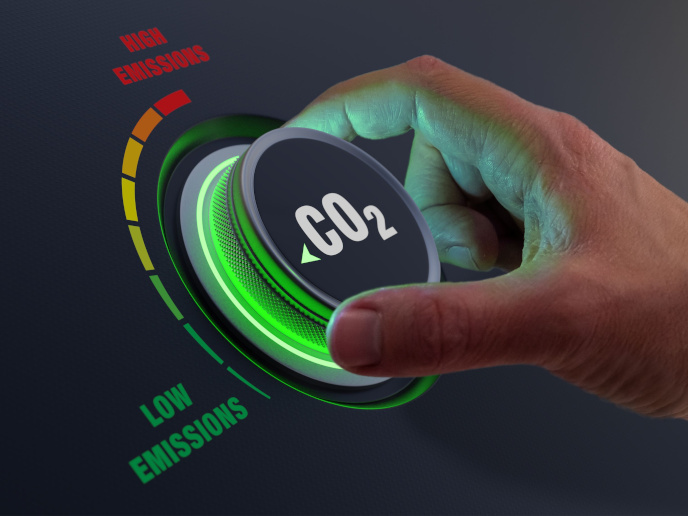Global carbon budget update highlights difficult path ahead
A recent analysis coordinated by the Global Carbon Project has provided the latest update on the global carbon budget that measures the amount of greenhouse gases the world can emit while limiting global warming to 1.5 ℃, 1.7 ℃ and 2 ℃. Conducted with partial support from the EU-funded 4C and CoCO2 projects, the report does not paint an encouraging picture. According to the article, the world is projected to produce an estimated 40.5 billion tonnes of human-driven CO2 emissions in 2022, leaving 380 billion tonnes of CO₂ as the remaining carbon budget if global warming limits are to be kept below 1.5 ℃. At current emission levels, there is a 50 % chance that we will reach this threshold in a mere 9 years from the start of 2023. The remaining carbon budget with warming limited to 1.7 ℃ and 2 ℃ is, respectively, 740 billion tonnes (consumed within 18 years) and 1.23 billion tonnes (consumed within 30 years) at current emission levels. If we are to have any hope of preventing the worst impacts of climate change, we therefore need to slash global emissions.
Calculating the budget
To estimate the carbon budget, the researchers first determined how much CO2 humans have emitted and how much has been removed from the atmosphere through land and ocean carbon sinks. They found that global CO2 emissions from fossil fuels and cement production are projected to increase by 1 % in 2022, rising above pre-COVID-19 levels to reach a record high of 36.6 billion tonnes. The rise is mainly due to higher oil emissions as air travel recovers from the pandemic. The countries responsible for the biggest increases in CO₂ fossil emissions in 2022 are India and the United States, with 6 % and 1.5 % higher levels, respectively, compared to 2021. China is expected to see a 0.9 % drop and the EU a 0.8 % drop in emissions, while levels in the rest of the world are projected to rise by 1.7 %. Global CO2 emissions from land use change are expected to drop slightly to 3.9 billion tonnes in 2022, mostly as a result of increased reforestation. Together, fossil fuels and land use change result in the emission of 40.5 billion tonnes of CO2 into the atmosphere. According to the report, the ocean carbon sink grew rapidly in the last two decades, absorbing an average of 2.9 billion tonnes of CO2 each year (about 26 % of global emissions), with a similar estimate projected for 2022. The land sink also continued to increase during this period, averaging 3.1 billion tonnes per year, or 29 % of total CO2 emissions. The projected land sink estimate for 2022 is about 3.4 billion tonnes annually. Overall, land and ocean sinks remove around half of all CO₂ emissions from human activities. Even so, global CO2 concentrations in the atmosphere are set to reach 417.2 parts per million in 2022, which is 51 % higher than pre-industrial levels. It is vital that we reach net-zero CO₂ emissions to keep global warming well below 2 ℃. However, the analysis supported in part by 4C (Climate-Carbon Interactions in the Current Century) and CoCO2 (Prototype system for a Copernicus CO2 service) foreshadows a challenging road ahead. For more information, please see: 4C project website CoCO2 project website
Keywords
4C, CoCO2, CO2, emissions, carbon budget, land sink, ocean sink, global warming



